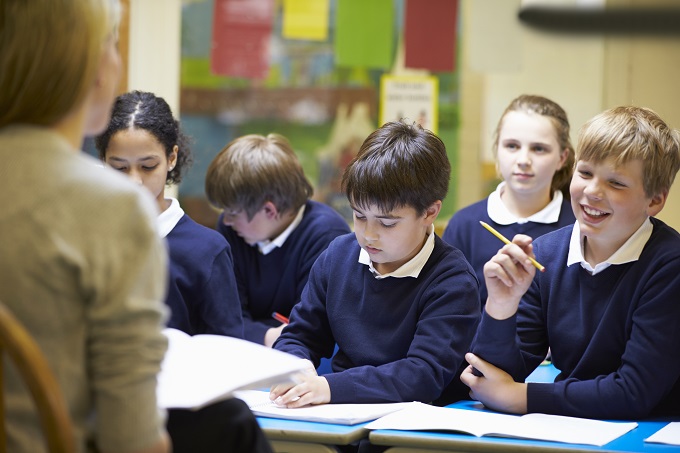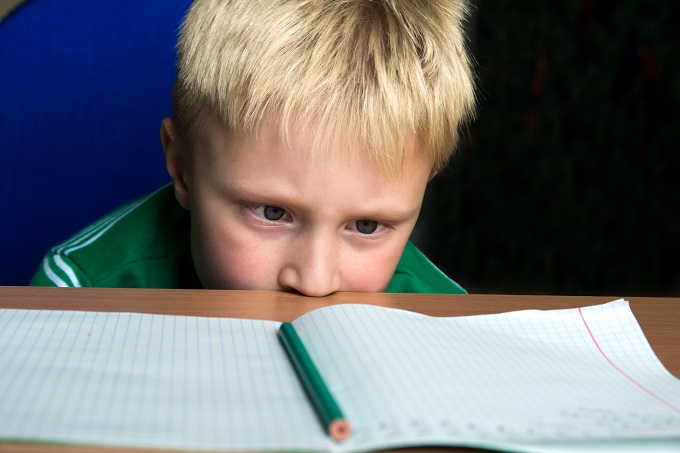Learning from disruption: Why we should rethink the place of NAPLAN in our schools
Hundreds of thousands of children around Australia, in years 3, 5, 7 and 9, are this week taking part in the National Assessment Program – Literacy and Numeracy (NAPLAN) tests.

This suite of testing requires students to sit four tests of reading, writing, language conventions (spelling, grammar and punctuation), and numeracy.
Last year, NAPLAN was cancelled as a result of the COVID-19 pandemic’s disruption to Australian schools. The cancellation of this high-stakes testing program was just one of the many changes, challenges and disruptions to education in 2020.
As we venture into a post-pandemic world, we need to reflect on what we’ve learned.
An important question raised by the events of the past year is: What’s the promise and price paid by our school systems, children, educators and families for NAPLAN, particularly in its current form?
NAPLAN: The promise and the price
The stated purposes for NAPLAN have developed over time, but in sum, as stated in the 2020 federal review of NAPLAN, they included “monitoring progress towards national goals, school system accountability and performance, school improvement, individual student learning achievement and growth, and information for parents/carers on school and student performance”.
A survey of high-performing schooling systems across the OECD revealed no common assessment practices. For example, New Zealand and Scotland both employ “only sample assessments to monitor the education system”, combined with teachers’ professional judgements (2020 federal review, p9).
In the past decade, a focus on how schools, teachers and students perform has intensified. A major reason for this is the 2010 decision to publish NAPLAN test results on the My School website. It allowed inter-school comparisons, and was a crucial factor in weaponising competition between government and non-government education sectors, and between various states.
Annual results from NAPLAN tests are analysed and compared. Resulting data and trends are prioritised over richer sources of information, and used to make judgements of systems, schools and teachers.
Since its introduction in 2008, the increased reliance on NAPLAN results to inform education policy and practice has coincided with a decline in the relative performance of Australia on global league tables. Although this may imply correlation and not necessarily causation, there is evidence that NAPLAN has been counterproductive in its aim to raise achievement (details of which are included in the 2020 federal review of NAPLAN).
Beyond its failings in regard to academic achievement, NAPLAN has also had a series of highly detrimental unintended consequences. A national study of more than 8000 teachers revealed:
- narrowing of teaching strategies and of the curriculum
- negative impacts on student health and wellbeing
- negative impacts on staff morale
- negative impacts on school reputation, and capacity to attract and retain students and staff.
Our research also exposed the impact of these unintended consequences. Our 2019 survey of more than 2400 teachers showed their experiences of NAPLAN’s negative effects. The comment below from one teacher summed up many of the responses:
NAPLAN is one of the worst things we can do. It sets off school against school and parents against schools. We should be training children for the future and allow them more time for creative things as well as reading, writing and maths.
Teachers and school leaders are impacted by associated performance pressures, which contribute to excessive workload, stress and ill-health. Many noted that this was contributing to them considering leaving the profession.
Unless significant changes happen to improve workload … and getting rid of NAPLAN, I’ll probably look at other career paths/alternatives. – Teacher, 2019
NAPLAN and student wellbeing
Child and youth mental health is a crucial concern in our communities. Research from the United Nations Children’s Fund (UNICEF) showed that, when compared to the 38 richest countries in the world, Australia’s children and young people are experiencing some of the lowest levels of wellbeing and mental health.
In a project in which we surveyed almost 100 Victorian public school leaders, the majority of respondents felt that mental health was the most concerning social issue facing their school, and that this had increased over the past five years. Concern about the prevalence of anxiety, exacerbated by high-stakes testing, was noted.
[There are] increasing numbers of students, staff and parents experiencing anxiety [and there is] increased focus and belief that testing is highly important, at the expense of time for teaching wellbeing-focused skills and behaviours. – School leader, 2020

Previous research has shown the link between NAPLAN testing and decreased student wellbeing. Concerns about the effects of NAPLAN on student wellbeing have been raised by parents and educators alike.
In their statement explaining the cancellation of NAPLAN 2020, the Education Council (a committee of state and federal education ministers) said: “The decision to not proceed with NAPLAN in 2020 has been taken to assist school leaders, teachers and support staff to focus on the wellbeing of students.”
Their recognition of this issue last year was a well-received acknowledgment of the extra challenges that COVID-19 posed to student wellbeing and youth mental health. But as we have discussed, even without COVID-19, child and youth mental health is a significant concern.
We know that NAPLAN itself has detrimental impacts on the wellbeing of students, so why are we bringing it back in its current form when concerns about wellbeing and mental health are more pressing than ever?
Community and connection come first
Despite its challenges, 2020 provided an opportunity to learn many important lessons about education and schooling.
Through several of our research projects in 2020, we heard from students, families and school leaders. A survey of more than 200 Year 12 students told us about the challenges they had faced:
Nothing has been easy. As a matter of fact, online learning has made Year 12 10 times more difficult and stressful. – Year 12 student, 2020
There’s a lot more discussion about HSC, toxic school academic culture, as these factors of stress have been hugely compounded by COVID. – Year 12 student 2020
But we also heard about the importance of the support from teachers and connection with school:
[Teachers] went out of their way to be available to us students when we needed them via multiple different communication platforms. – Year 12 student 2020
In our 2020 survey of a representative sample of the Australian population for our perceptions of schooling study, we found that public support for the work of schools and teachers increased throughout the pandemic. Families and communities felt more connected to schools as they saw teaching and learning unfolding before their eyes at home.
In interviews with school leaders in nine Melbourne schools last year, we heard how schools managed the conditions of lockdowns. When communities were faced with heightened uncertainty and confusion, the work of principals became even more important.
My role is as a community leader, and reminding myself that I’m leading a community of people: the families, the staff, and ensuring that I’m doing the best to spread a positive attitude – the glass is half full, we will get through this. – Principal, 2020
It was clear that belonging and connection are the pillars that underpin schooling, and that in 2020, NAPLAN in its current form was not missed.
A common theme across our research with students, families and school leaders during 2020 was that when all the normal arrangements and structures of schooling were stripped away, the key focus was wellbeing and relationships:
We deferred to think about the wellbeing concerns first, which was really, really important, and certainly not lost on any teachers at our school. Certainly, wellbeing is paramount amongst schools. – School leader, 2020
We’re just trying to, I guess, garner some smiles from our kids. – School leader, 2020
It was clear that belonging and connection are the pillars that underpin schooling, and that in 2020, NAPLAN in its current form was not missed.
Reimagining schooling without NAPLAN
The disruptions of 2020 provided a rare moment to reimagine what schools can and should be.
If we want to move to more productive and holistic post-COVID education in our country, we should rethink NAPLAN in its current form and focus on what matters. This includes:
-
Shifting NAPLAN to be a sample assessment, rather than assessing entire student cohorts. This would enable monitoring of system trends over time, and was suggested by the federal review as a possible solution to address some of the negative consequences of NAPLAN.
-
Valuing a rich repertoire of assessments with teachers’ professional judgements being the basis of reporting to parents and students. Sample assessments such as NAPLAN that monitor the education system can be included, but should be “used only by schools and teachers as one piece of evidence contributing to reports to parents/carers, students and local education authorities”. (2020 federal review of NAPLAN, p10).
-
The removal of the My School website. Its detrimental impacts that allow league tables of schools to be assembled has perverted and distorted the fundamental purpose of our education systems.
-
Fair funding. Among OECD nations, Australia has a highly inequitable system of public education funding. A fairer system of funding that provides the resources and support that all students need to maximise their potential would improve achievement and social outcomes for every community across the country.
-
Trust teachers and school leaders. NAPLAN and the associated focus on narrow measures of achievement have resulted in reduced trust in the professionalism and quality of our educators. Believing in their abilities and trusting in their expertise to know their students would lift the learning of all students in the best ways for them, not just for their test scores.
-
Listen to students. With disengagement and mental ill-health at concerning levels, we need to put more time and resources into understanding the experiences of students in our schools.
In 2020, school communities survived without NAPLAN. They taught, they assessed, they reported, and – most importantly – they supported. From that lesson, we should reimagine the testing regime so that schools and students can be supported to thrive.







